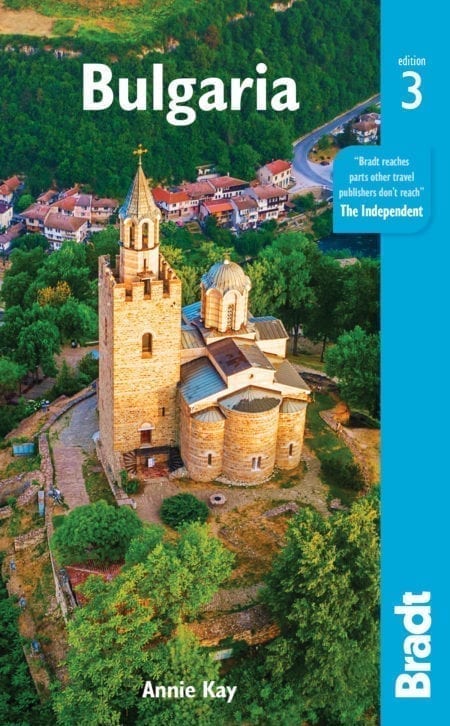If there’s one thing Bulgaria has in abundance, it’s beautiful monasteries. And with approximately 150 ‘working’ Orthodox Christian monasteries dotted around the country, you will inevitably have to pick and choose which will feature on your itinerary.
So, to help you narrow it down, here is my selection of the finest in Bulgaria. Each is well worth your exploration.
Rila Monastery
The first sight of Rila Monastery’s towering exterior gives the impression of a fortress; in the past this security was necessary, as the wealth of the monastery attracted robbers, though its remote situation in the mountains and its altitude, 1,150m, helped to protect it.
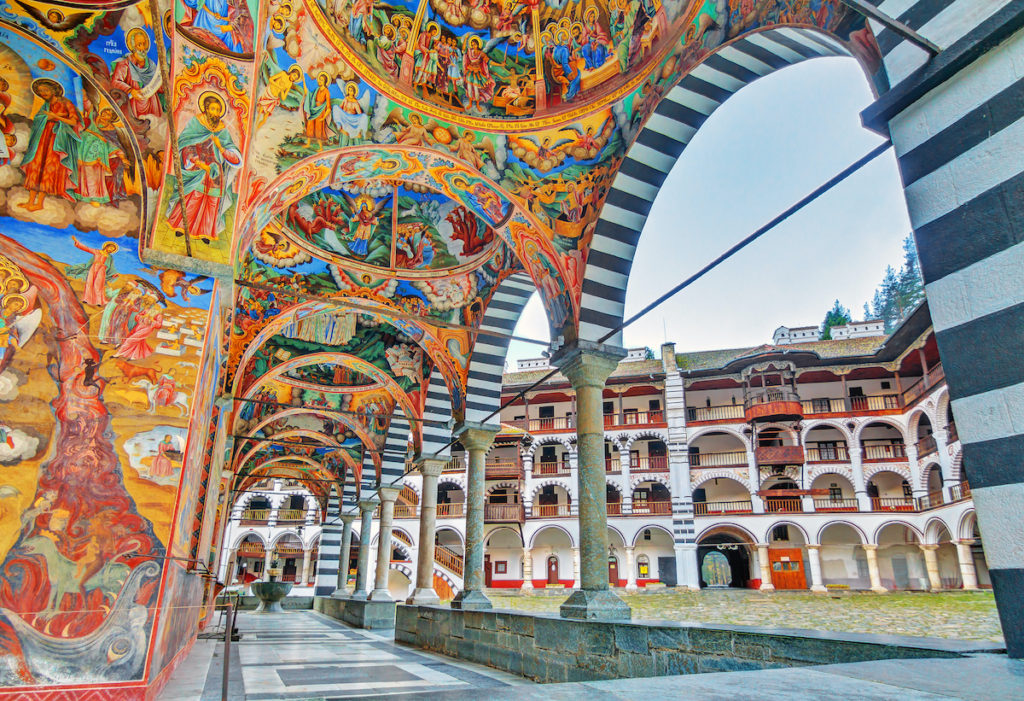
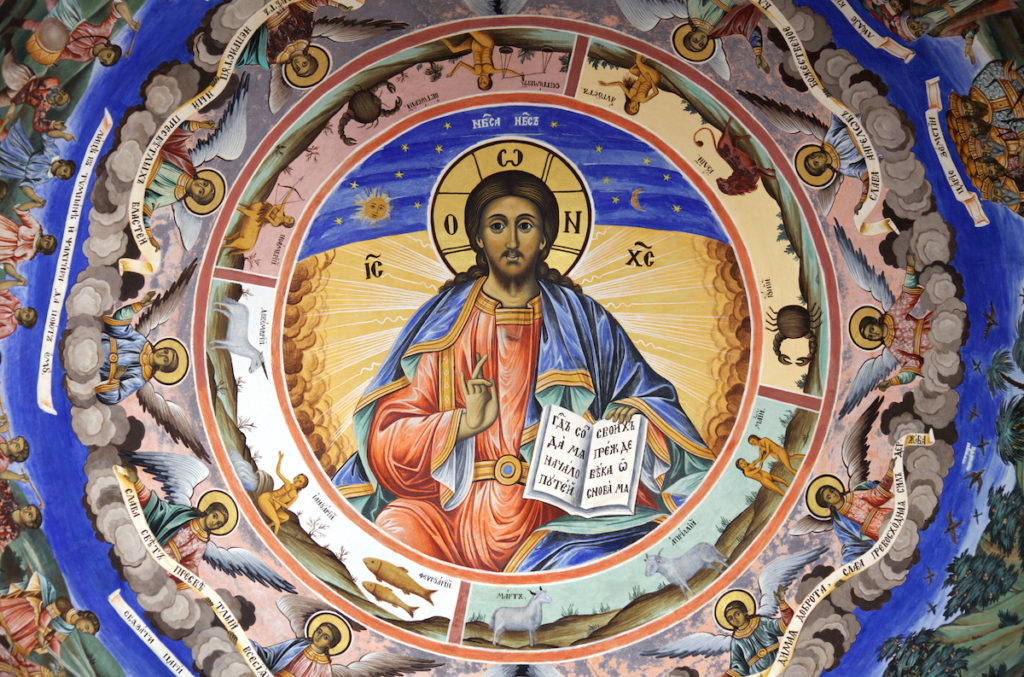
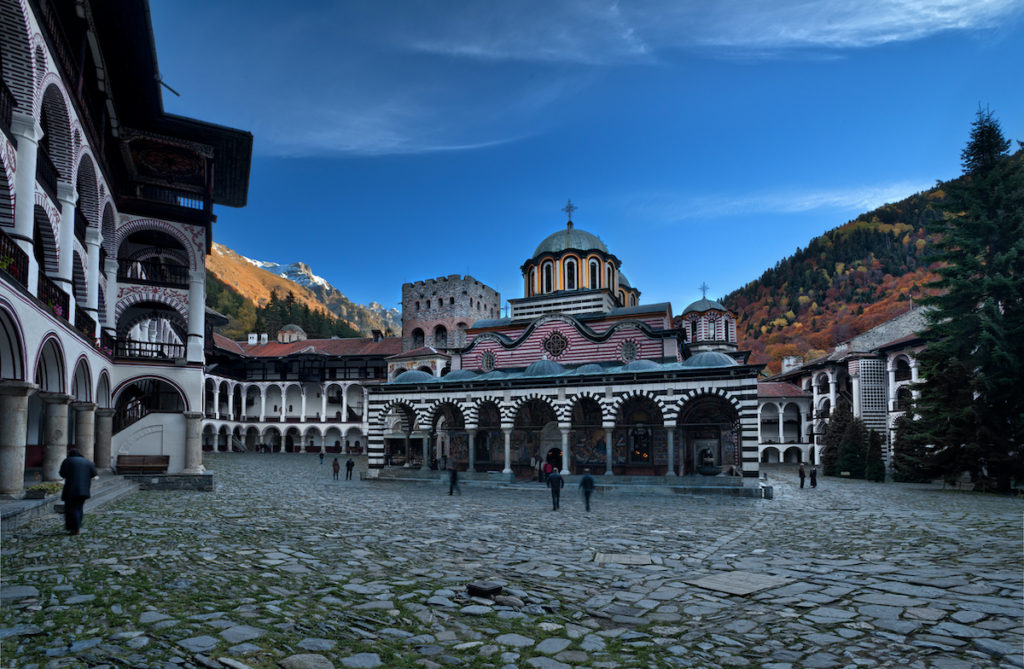
Situated in this location since 1335, the monastery suffered damage and destruction during the Ottoman conquest and the subsequent occupation. However after each setback renovation soon began again. Indeed, after the great fire of 1833, the Ottoman sultan allowed the rebuilding of the monastery, and plentiful financial donations from the people, together with the gifts of time and skills by many great artists and craftsmen, resulted in the splendid building we see now.
Passing through the huge gates of the monastery for the first time is one of life’s special moments: the scene changes from grey severity to a carnival of colour. All round the enormous courtyard are tiers of monks’ cells behind boldly decorated, arcaded balconies.
In the centre, the church itself, with richly coloured frescoes in the shelter of its porch, is the focus of attention, its lavishness emphasised by the simplicity of the 14th-century tower alongside it.
Bachkovo Monastery
Bachkovo is Bulgaria’s second largest and most important monastery after Rila. While Rila dazzles with its candy-striped pillars and gleaming red tiles, Bachkovo has a more muted and rounded character. In spite of the crowds, a peaceful and serene atmosphere prevails, though in the last few years the sheep and chickens that once lent the main quadrangle a certain rustic charm have been removed.
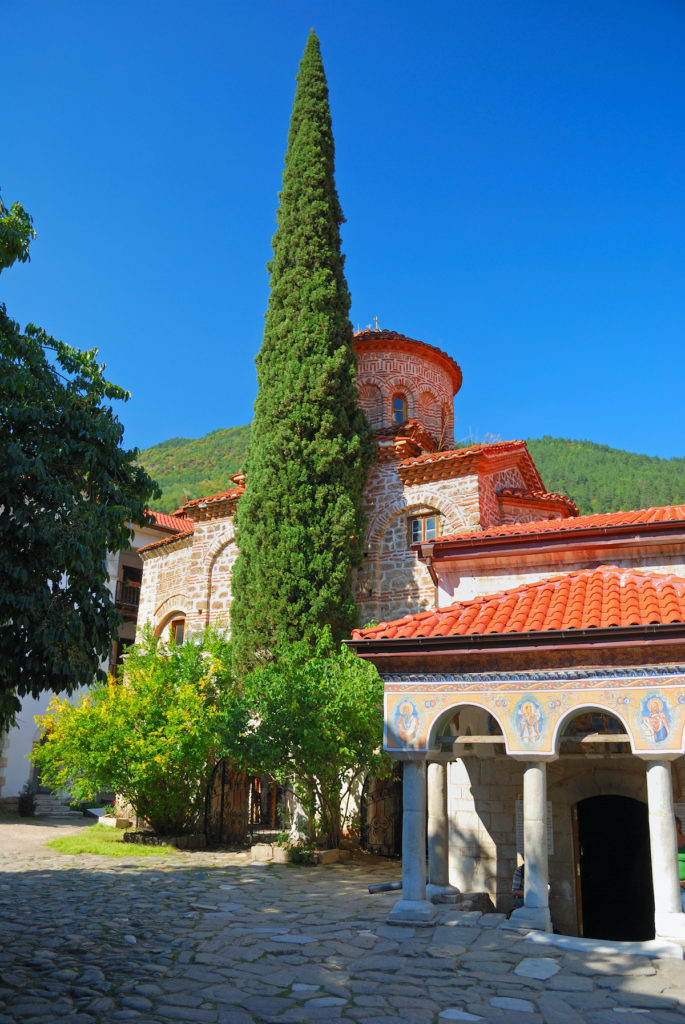
The monastery was founded in 1083 by two Georgian brothers, Grigoriy and Abasius Bakuriyani, who were military officers of the Byzantine Empire. From that era the ossuary church still remains with remarkable interior murals, some dating from the 11th century, one of which is said to depict Grigoriy. This ancient building stands apart from the present monastery on a mountain slope.
The overall harmony and beauty of the buildings, despite their different ages, is striking. There are galleried domestic buildings with open wooden verandas, guest rooms and the lovely refectory, inside and outside of which are murals.
Troyanski Monastery
The monastery is undoubtedly one of Bulgaria’s finest. Situated some 10km southeast of Troyan, it was established in the 16th century. Set in a wooded cobbled courtyard, it presents a perfect ensemble of timbered galleries, roofed with traditional local heavy stone slabs, and colourful external frescoes.
There is a fine 19th-century church, with frescoes inside and outside by famous artists Zahari Zograf, whose signed self-portrait is inside in the arch of a window.
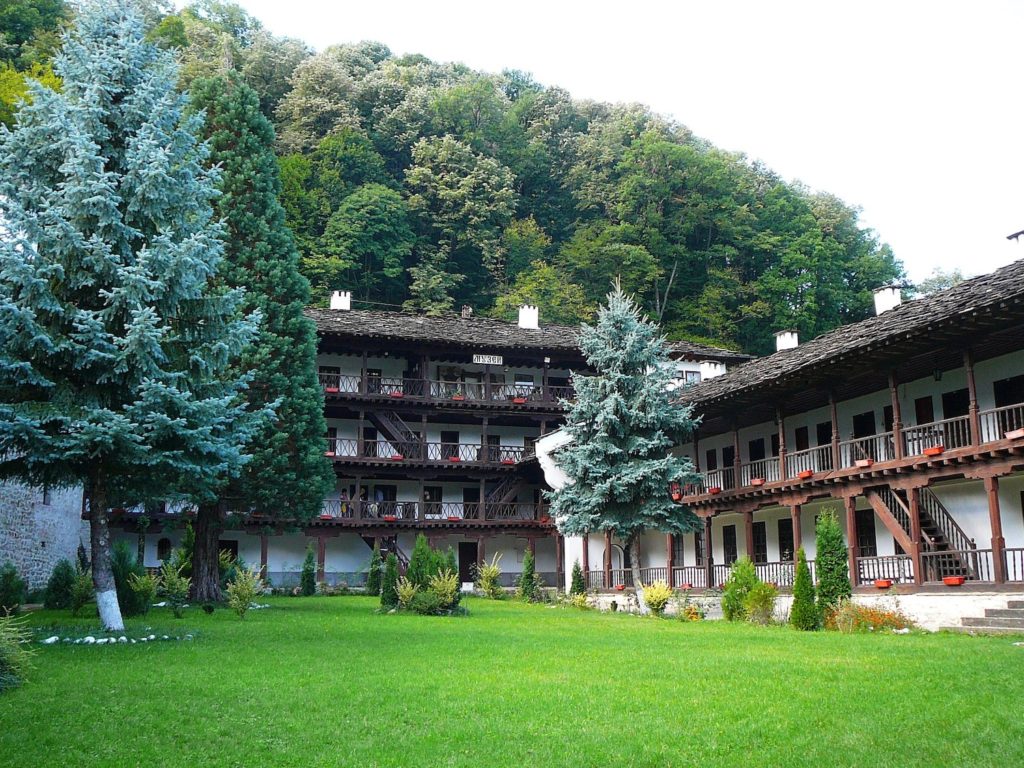
There is also a famous miraculous icon here: the three-handed Holy Virgin. This is said to have come from Mount Athos during the 17th century, donated by a Romanian monk in thanks for the hospitality he received at the monastery.
Together with Bachkovo and Rila monasteries, Troyan has a special status known as Stauropegial. This exempted them from the authority of local bishops and placed them under the direct rule of Constantinople. This status was granted in 1830, perhaps in recognition of the achievements of the distinguished Abbot Parteni.
Kremikovtsi Monastery
Situated on a hillside northeast of Sofia, this monastery was founded during the Second Bulgarian Empire (12th-14th century). It was then destroyed during the Ottoman Conquest, and re-established in 1493 by a local nobleman, Radivoy, who dedicated the church to his two children.
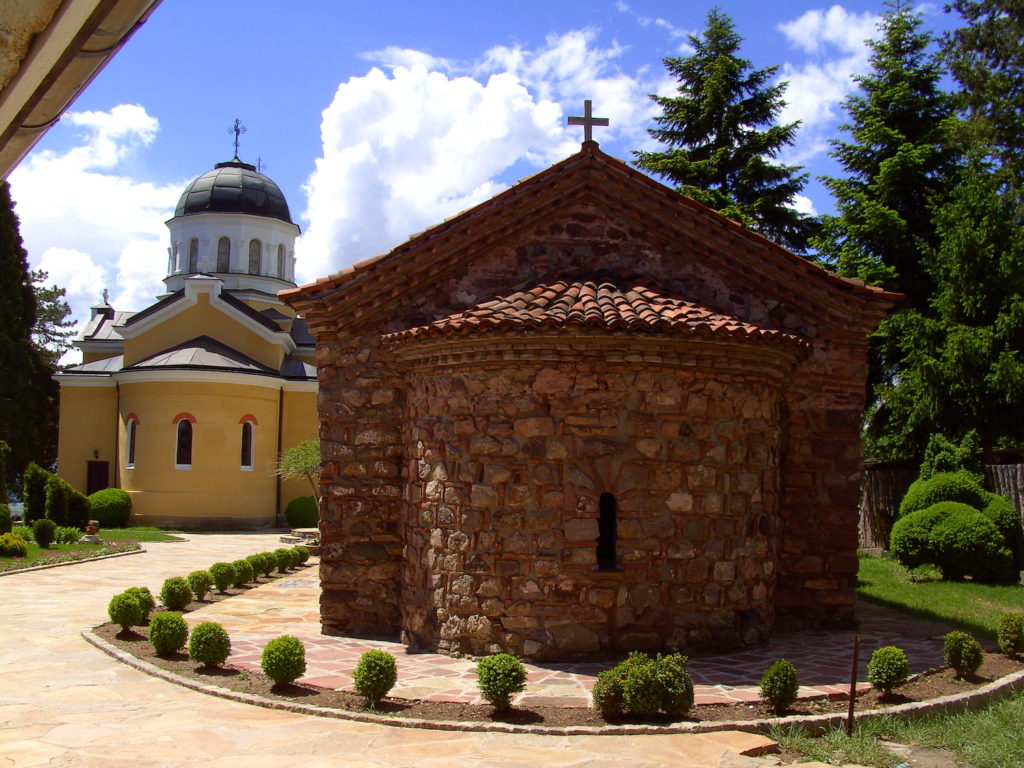
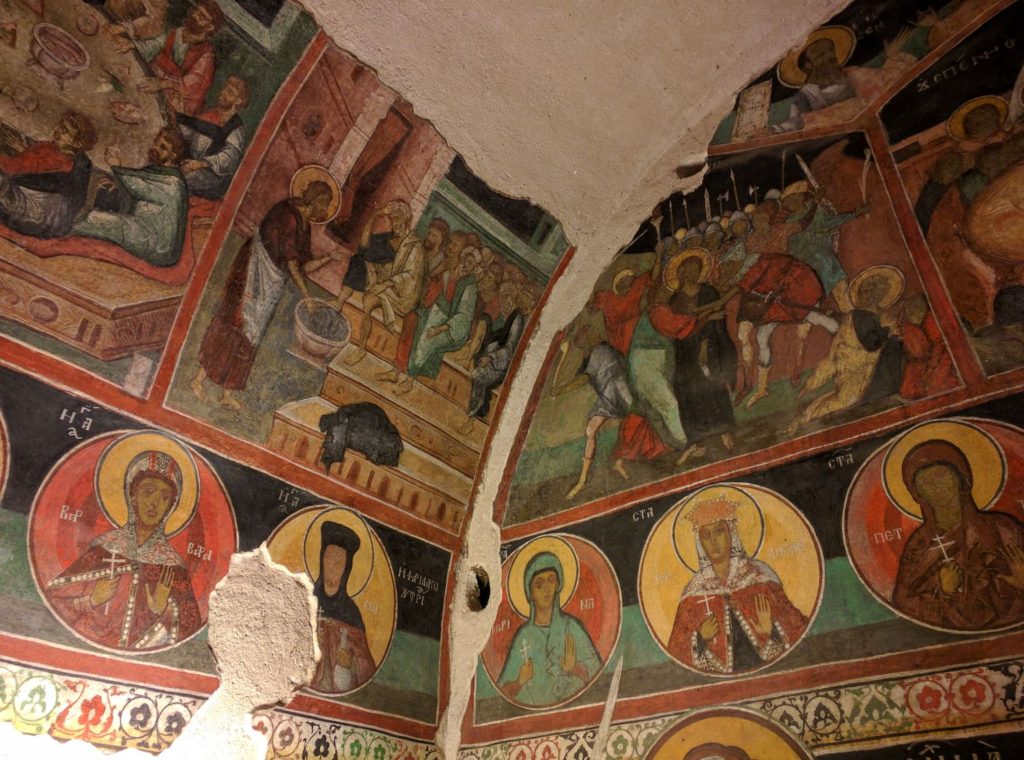
As is traditional, the paintings include one of the benefactor and his family, presenting a model of the church. These frescoes are among the most valuable surviving examples of 15th-century Bulgarian art.
Rozhen Monastery
This is a small and rather cosy place, seemingly more farmhouse than monument, and a great contrast to Rila. It was probably founded by the Melnik ruler, Alexei Slav, during the late 12th or early 13th century, and like Rila has been looted and burned many times since its foundation.
The courtyard, with tiers of cells and wooden balconies, is very simple, but the juxtaposition of stone and old woodwork softened by vines and fruit trees is appealing.
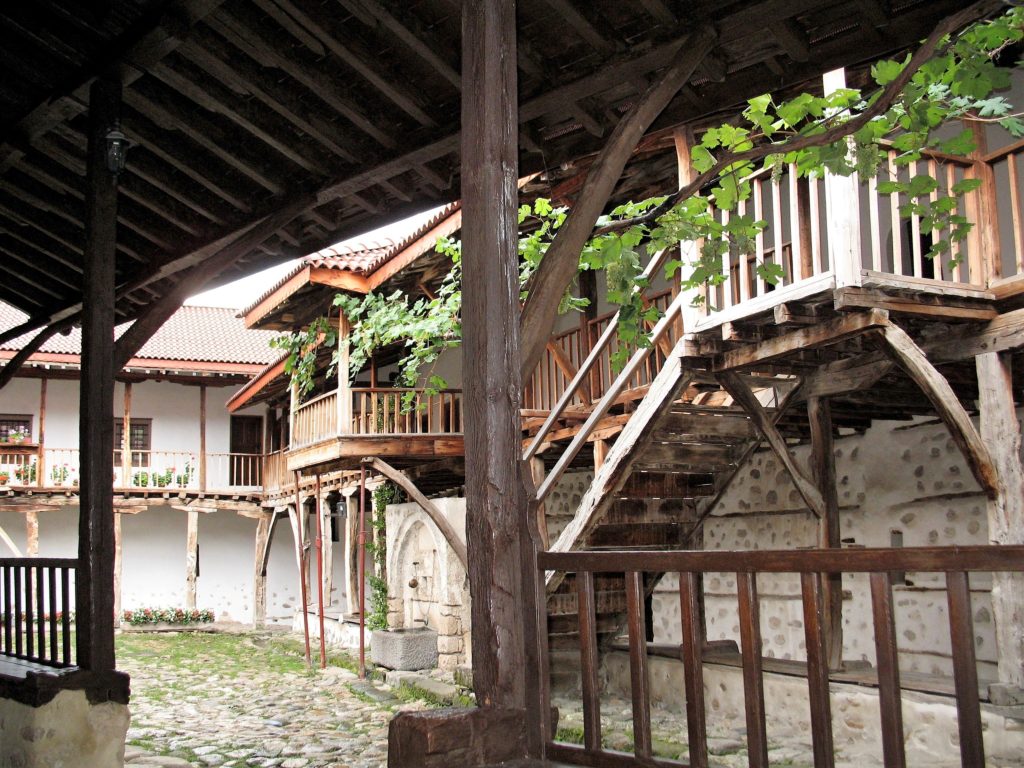
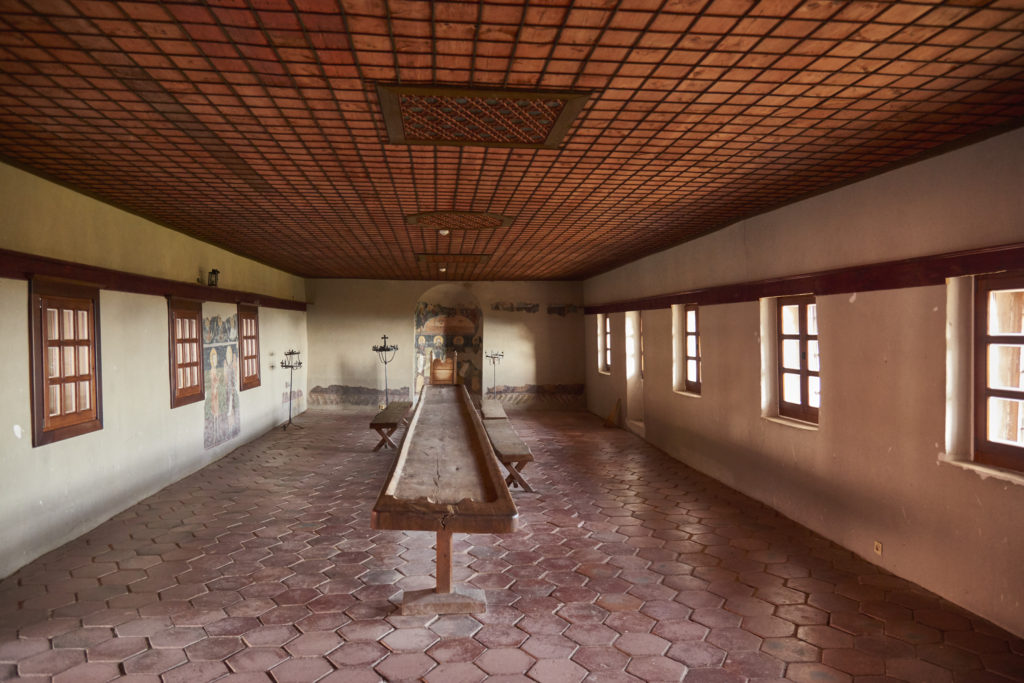
The Nativity of the Virgin Church has 17th-century murals, which have been delicately restored. Many of the paintings feature fishermen, reminding us of the area’s links with Greece and the Aegean. The church’s greatest treasure is a miraculous icon of the Virgin and Child, which many visitors come specifically to see.
Some cells are furnished to give visitors an impression of monastic life over the years. The rooms are simple but with brightly coloured textiles, and for the more senior monks there were some small touches of luxury.
Preobrazhenski Monastery
To the north of Veliko Turnovo lies Preobrazhenski Monastery. It was founded in the 14th century but destroyed by the Ottoman invaders and abandoned.
The ensemble of buildings here date from the early 19th century when it was refounded and both Kolyo Ficheto and Zahari Zograf were involved in its construction and embellishment.
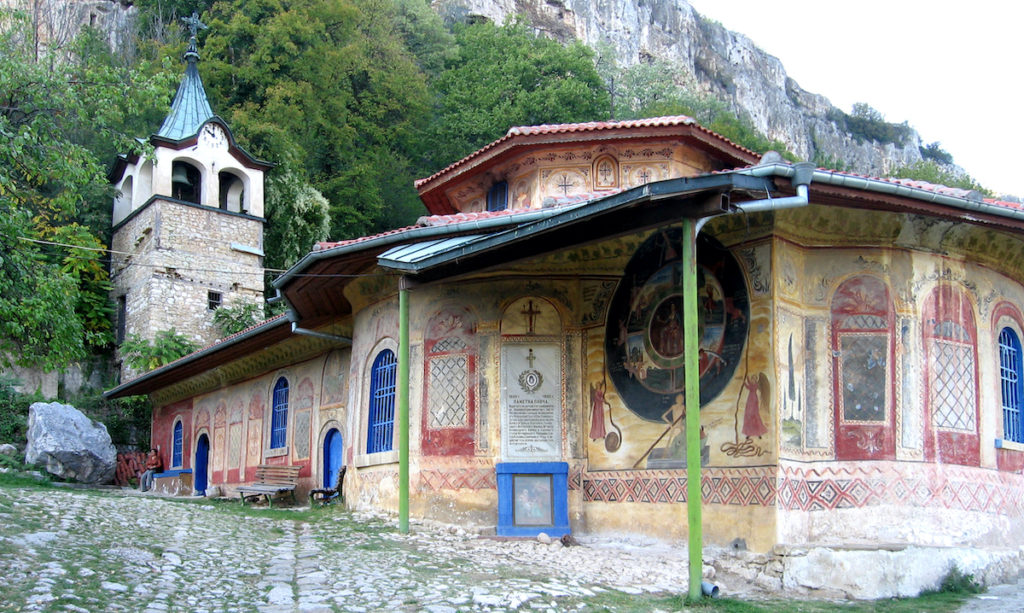
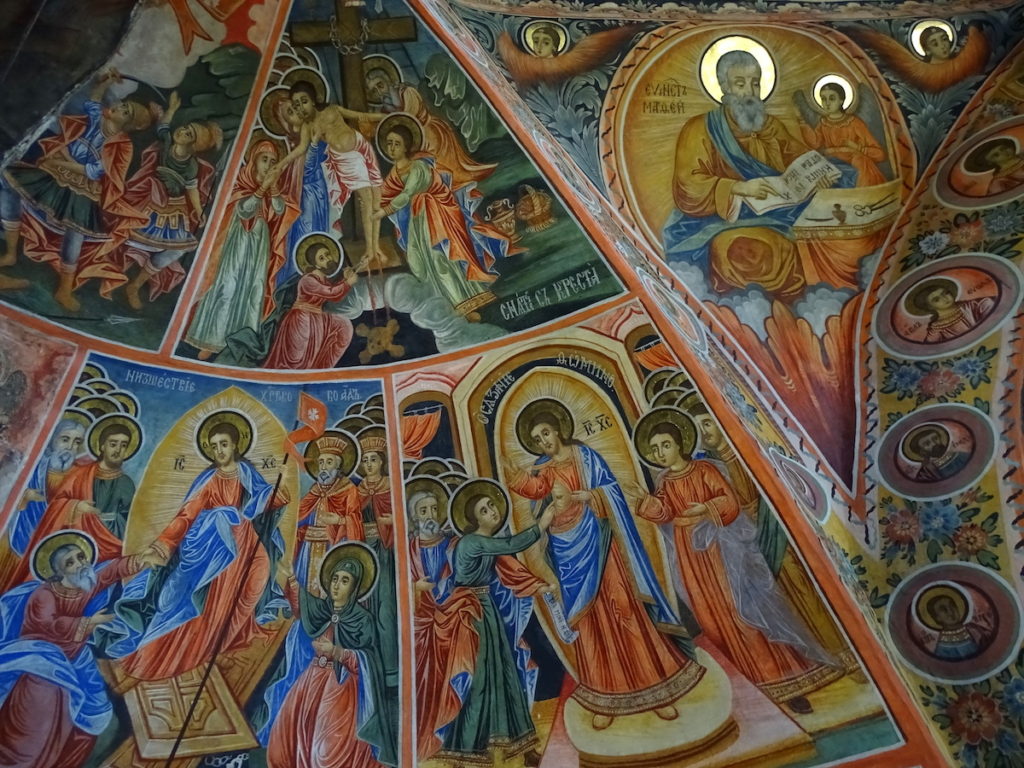
The frescoes repay study as there are wonderful morality tales here: those heading for Hell include thieves, traitors, adulterers, smugglers and witches, and also millers famous for selling short measures, and innkeepers for the same sin and for watering wine.
The monastery is perilously positioned on an eroding cliff; subsidence has caused some buildings to collapse but fortunately not the main church.
Glozhenski Monastery
This monastery of Sv Georgi the Victor was established in the 12th century and rebuilt in the 13th and is still functioning. It is in a spectacular elevated position above the village and looks a little like a medieval fortress.
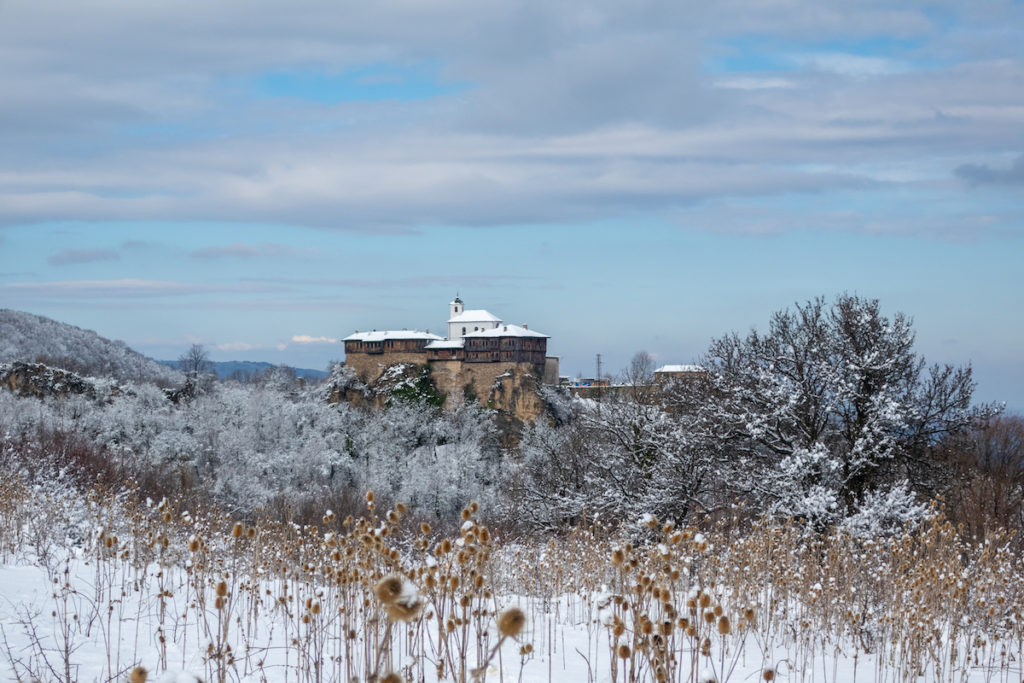
The story is that during the Second Bulgarian Kingdom a Russian Prince, Georgi Glozh, banished by the Tatars in the 13th century, was granted land by the Bulgarian King Ivan Assen II and laid the foundations of the village Chiren Pazar and the first monastery, dedicated to the Transfiguration.
The monastery, a centre of culture during the 19th century, was completely destroyed by the 1913 earthquake and subsequently rebuilt on the same foundations. The church is small and plain but the approach up steep cobbles is rather attractive.
Sokolski Monastery
Near Etur is the much-photographed Sokolski Monastery, actually now a nunnery, built in 1833. External frescoes are protected by a dome roofed by what looks like a little hat with a frilly edge.
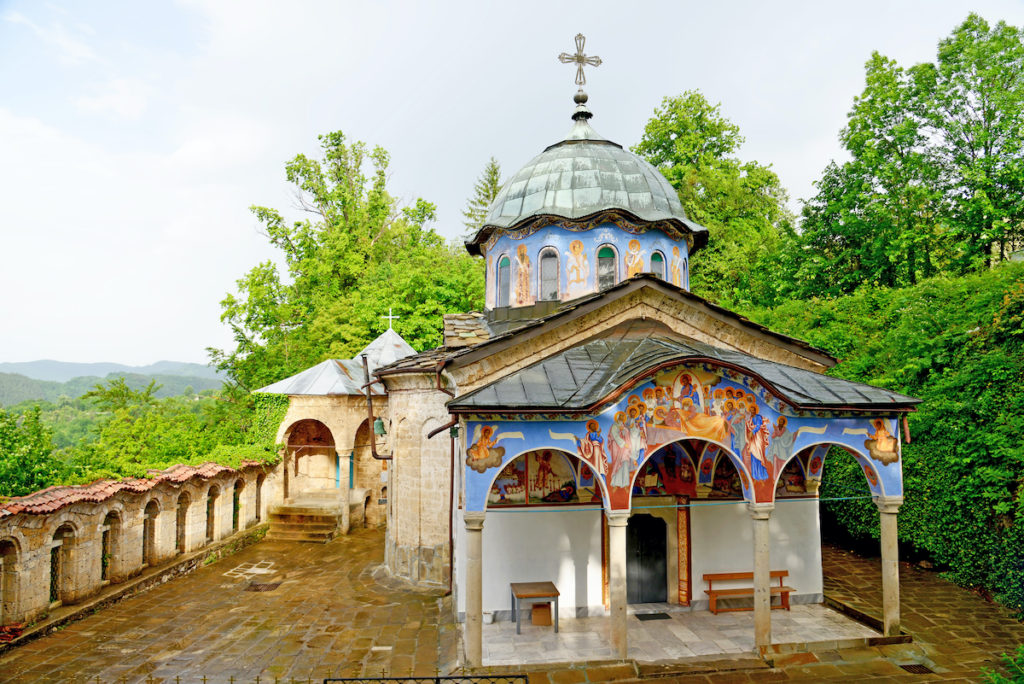
It is named after is founder Archimandrite Yosif Sokolski or, according to a different story, both he and the monastery are named after the many falcons which nest in the nearby rock crevices: sokol means falcon in Bulgarian.
In the courtyard there is a rather elegant fountain, featuring spouts shaped like falcon’s heads, by Kolyo Ficheto. The whole monastery and its frescoes have been restored in recent times.
